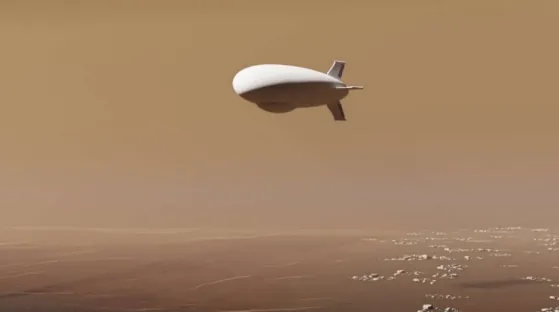
A Revolutionary Mission: Could SLS Launch a Titan Balloon to Unravel Celestial Secrets?
2025-01-09
Author: Wei
Introduction
A groundbreaking concept is on the horizon as discussions intensify around launching a balloon mission to Titan, Saturn’s largest moon. With its unique combination of low gravity and dense atmosphere, Titan is regarded as one of the most promising candidates for balloon exploration in our solar system. This idea has been percolating for over two decades, but numerous challenges have stymied progress—chief among them, the massive size of the required balloon, far exceeding the capabilities of current launch vehicles.
Boeing’s Role and Balloon Design
Enter Boeing, the lead contractor behind NASA's Space Launch System (SLS). Boeing's latest advancements suggest they can develop a launch platform capable of delivering the substantial payload of a Titan-bound balloon, unlocking the exciting potential to further investigate this enigmatic moon.
Unlike earlier concepts that incorporated "walking" mechanics, Boeing’s design resembles a traditional blimp. This balloon would be filled with helium and equipped with two ballast tanks, enabling fine control over its altitude and orientation through a cruciform tail structure. By ingesting and expelling local atmospheric gases, the balloon would be able to maneuver across Titan's thick air, exploring its frigid landscapes with unprecedented ease.
Mission Specifications
The proposed mission includes two balloon configurations: a smaller 150 cubic meter balloon designed to soar at an altitude of 5 kilometers and a larger 400 cubic meter version reaching heights of 20 kilometers. These designs can be ingeniously compressed to fit within the payload fairing of the SLS, paving the way for a potential launch scheduled between 2034-2036.
Scientific Potential
While the details remain scant in academic discussions, the scientific payload aboard the gondola is poised to be impressive. Equipment like RADAR and LIDAR systems could significantly enhance our understanding of Titan's surface, monitoring geological changes, while atmospheric sensors would search for organic molecules that could reveal insights into Titan’s mysterious liquid methane lakes.
Longevity and Challenges
An alluring aspect of this mission is its expected longevity; designed to endure Titan’s harsh atmospheric conditions for years. This durability would allow the balloon to gather critical data on seasonal variations and other phenomena—for instance, investigating the scientific enigma surrounding Titan's warmer night side compared to its daylight.
Economic Considerations
Despite these thrilling prospects, the SLS faces its own hurdles. Having only conducted one launch in 2022, another is not anticipated until 2026. Moreover, the estimated launch cost for SLS stands at a staggering $2.5 billion—a figure that, while likely to decrease over time, competes unfavorably against emerging contenders like SpaceX’s Starship, which boasts more impressive payload capabilities.
Additionally, NASA's Dragonfly mission—a helicopter explorer for Titan—has already set sights on a launch using SpaceX’s Falcon Heavy in 2028. While the Falcon Heavy may not have the same payload capacity as SLS, it opens up the possibility of launching a scaled-down version of the Titan balloon mission sooner.
Conclusion
As the landscape of space exploration evolves with cheaper access to space and an expanding variety of launch platforms, the dream of launching a balloon mission to Titan is becoming increasingly feasible. It’s only a matter of time before the scientific community unravels the secrets of this distant world—how they get there remains a thrilling question for future space enthusiasts. Stay tuned for what could be a revolutionary leap in planetary science!


 Brasil (PT)
Brasil (PT)
 Canada (EN)
Canada (EN)
 Chile (ES)
Chile (ES)
 Česko (CS)
Česko (CS)
 대한민국 (KO)
대한민국 (KO)
 España (ES)
España (ES)
 France (FR)
France (FR)
 Hong Kong (EN)
Hong Kong (EN)
 Italia (IT)
Italia (IT)
 日本 (JA)
日本 (JA)
 Magyarország (HU)
Magyarország (HU)
 Norge (NO)
Norge (NO)
 Polska (PL)
Polska (PL)
 Schweiz (DE)
Schweiz (DE)
 Singapore (EN)
Singapore (EN)
 Sverige (SV)
Sverige (SV)
 Suomi (FI)
Suomi (FI)
 Türkiye (TR)
Türkiye (TR)
 الإمارات العربية المتحدة (AR)
الإمارات العربية المتحدة (AR)